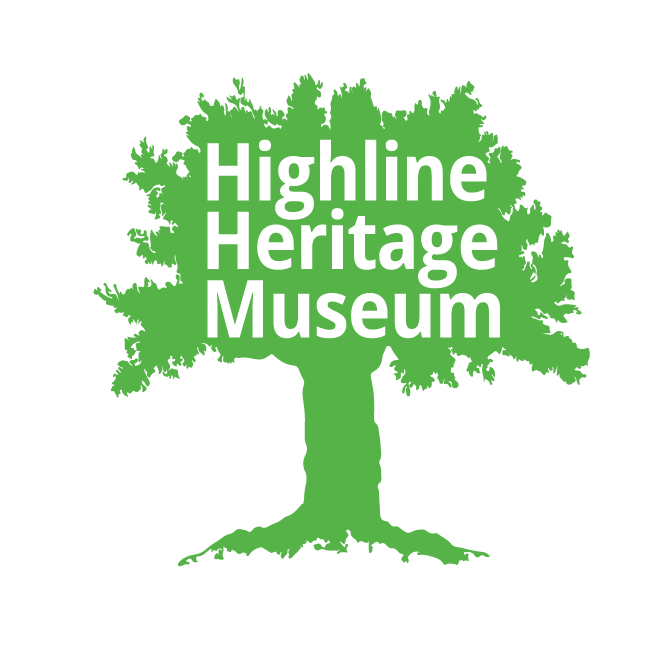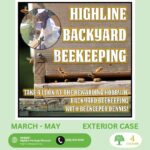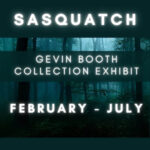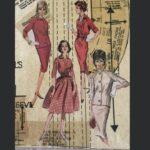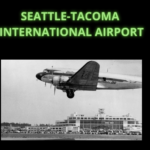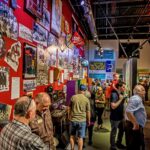August 16, 1999
Della Utterback Schmidt
GP: Were you born and raised right here in this area?
DUS: Yes, I born in my grandparents home and it was located on South 176th and Des Moines Way South. It was their old house.
GP: And then you went to school here, where did you go to school? Riverton School?
DUS: No, I started in when I went to school I went to the old Manhattan School when it was on first avenue and 178th. It’s gone now.
GP: That’s one of the first schools.
DUS: There were just such a few students that when I was in the fourth grade they closed it and we all went to Sunnydale and then I went to Highline. Highline at that time had 8th grade. There was no junior high.
GP: So what class at Highline did you graduate?
DUS: I graduated in ’38. In fact we had our 60th reunion a year ago at the Ranier Golf and Country Club. That was fun.
GP: How many were there?
DUS: Well, there was a lot. And every October the 1st Thursday or the 2nd Thursday of the month we’re going to get together for a luncheon and this time it’s going to be down at the Long Creek Restaurant in Des Moines and it’s a no host. No planned one. Just come and eat.
GP: It’s great that you keep in touch like that. So would you like to add anything before we go to Highline High School? Do you remember any the names of any teachers in either the grade school or the high school?
DUS: Well, let’s see. I had a Mrs. Perkins in Manhattan and then down at Sunnydale there was Mrs. Gerhart and Mr. Edie and Mr. Kilman and Mrs. Heinse and Miss Kelly.
GP: You remember them all.
DUS: Oh yeah. The principal when I first went to Sunnydale was Mr. Mitchell. Truman B. Mitchell and he was followed by Harry Kittleman. At Highline I had, the principal was Mr. Baker and then Mr. Johnson.
GP: Okay. These were the days of the depression, before the war. How many kids were there in Highline at that time?
DUS: Well, there weren’t very many. They came all the way from the city limits to just a little bit beyond Midway. Then one year before they built Federal Way High School they bussed up the, I think it was the juniors and seniors to Highline to go to school and then they built the new Federal Way High School.
GP: Okay. Do you remember the old streetcars at all? That was called the Trolly Follies.
DUS: Yeah. I’ll tell you, I rode in on that thing, we used to go. My mother had a cousin in White Center and sometimes my dad would drive us to Burien and we would take that and boy I tell you that was worse than any amusement ride today. Boy, you hung on for dear life.
GP: Just between here and White Center?
DUS: Oh yes, and then you transferred on into Seattle.
GP: So then I guess you really got a thrill, going over the Duwamish.
DUS: I didn’t go that far, so. No it wasn’t a trolley that you’d want to go if you got seasick, that’s for sure. Because it would wiggle like this, back and forth.
GP: How much did it cost to ride that, do you remember?
DUS: No. There were tokens that you bought. Back in those days you could get even for the busses. The trolleys downtown it was 3 tokens for 25 cents.
GP: Not bad, not bad.
DUS: They never took money. They always had to take tokens and when the busses went in then they had to take cash.
GP: I imagine the conductor had a little token thing on his hip I suppose, his little kit with the money in it?
DUS: Well, he put it in a little box and he twirled this handle around and around.
GP: I remember that.
DUS: And then of course if you jumped the thing that went up to the trolley bars, if that jumped then everything stopped and you had to get out and put it back on the wire again. But then it went down the middle of the street too, and of course you had to there wasn’t so many cars then but you had to walk out to the middle of the street to get on and off the trolley. But I don’t recall any accidents or anything like that.
GP: Cars kind of looked out for people I guess.
DUS: Yeah. It was kind of, well we didn’t know anything else but that.
GP: How about where did you do your shopping, where did you get food?
DUS: Oh boy. When I was small as close as I can remember, they use to go once in awhile down to South Park.
GP: Were there gardens or something?
DUS: Well, they had a store down there and I know my folks and my grandparents would order sacks of sugar and flour and stuff like that. But we grew most of our own vegetables on our own property. And fruit. We did a lot of canning and then we butchered the pigs and chickens and geese and stuff like that. Well, we were pretty self sufficient. We bought very little at the store and then the first store that I can remember out in this area was little what we would call Mom and Pop stores now. There was Getners and then there was a store that was built right across from Sunnydale School that is as gas station now.
GP: Still the gas station there now.
DUS: Yes
GP: Where was Getners located?
DUS: That was down on about 144th and Des Moines Highway. That’s a tavern now. It’s right across that Italian restaurant.
GP: All right, okay.
DUS: And that used to be a small grocery store plus a feed store too. But the big store that I can remember in Burien was where Pacific Fabric was. And I don’t remember but it was an odd name Piggly Wiggly or the Three Bears or something. Then I guess the first one of modern day would have been the Safeway store. And that was in where Standard Brands used to be on 152nd across from the bank there. See, at first that area there was a chicken farm. Ironside’s had chickens. Remember that?
GP: No I heard about that. Yeah they had a big farm there didn’t they.
DUS: They had this fence there around their place and then there was kind of like a run, you went through two gates. But they always turned the dogs loose on the outer one at nighttime so nobody ever went and got eggs at night.
GP: They kept out the coyotes or something too.
DUS: Yeah, it did. But most of the old stores, though, because there were kids attending Highline High School that lived up 152nd, clear up to almost up to 4th avenue on the south side of the street.
GP: And they had to walk because there was no?
DUS: They had to walk to Highline High School. Yeah it was close by for them. We were always bused in.
GP: So you were quite a few miles from there.
DUS: And at that time anybody, if you lived within two miles you didn’t get to ride.
GP: I think it’s still about the same, isn’t it.
DUS: Oh, I thin k now they pick them up every 2 blocks. But there was a lot of older buildings there. They’re all gone now. But that Kirk’s Feed Store probably is about the oldest one that I can think of right now that’s still running.
GP: Yeah, I think that’s still maintained and running.
DUS: The first department store we had was the forerunner of Lamonts and that was Bells.
GP: Is that ?
DUS: In fact they enlarged Lamonts, so it sat right in that spot right there.
GP: Do you remember the Field House? Were there any activities at the Field House that you participated in?
DUS: Oh, that was just vacant there with just the Field House. We never went that far, because in those days we had to walk if you went any place. And then the little tiny old library used to sit back there.
GP: Do you remember what part of the building? Was it behind the building or in front of it? We saw some pictures and we wondered which part was the library.
DUS: It seems like the library was closer to 152nd than the Field House.
GP: Was it near the building or off separately.
DUS: I thought it was separate. It wasn’t very big.
GP: Okay.
DUS: No, I never did get to go the Field House because that meant we had to walk all the way over there. We had too many jobs to do on the place.
GP: Sure, chores to do. So at your place did you have chickens, a pig and several animals to take care of?
DUS: Yeah, my grandparents had 40 acres and then we had the 10. They had horses and cows and they had geese and chickens and pigs and then on our property we had a horse and a cow, goats (a couple of those) and we had chickens. My dad after he retired from the Navy had built a big chicken coop and we had about 20,000 chickens.
GP: Oooh, You had plenty of work to do didn’t you!
DUS: Well, and then we sold to Washington Poultry and Egg Company; I think it was in Seattle. They had to be all cleaned and candled.
GP: How many were in your family?
DUS: I had a brother and one sister.
GP: So you had a lot of cleaning and candling and all that to do?
DUS: We had to clean out the chicken coop and if the people down on Three Tree Point found out when we were going to clean out the chicken coop they wanted to come up and get the fertilizer and all that stuff for their garden.
GP: Yeah, it’s got to go somewhere. So you didn’t have a whole lot of time for your school activities like sports and all that business, you had to get home.
DUS: We didn’t have the sports like they do now. We played at school and stuff like that but
GP: Didn’t have a girl’s basketball team, traveling around or anything?
DUS: Well, the girls didn’t do so much traveling. The boys in high school they would go from place to place. But most of the girl’s activities were centered in the high school. We didn’t travel.
GP: Did they have clubs, like homemeck club or something?
DUS: Yeah, we the boys and girls clubs and had a lot of different band clubs and activities and stuff like that, but that was all once you got into high school.
GP: Did you play in the band?
DUS: No.
GP: What did the girls club do, do you know?
DUS: No. I don’t know that. Sometimes either the boys or girls club would sponsor a dance in the gymnasium, but you know you just went for 5 cents or 10 cents. They used that for a money raiser.
GP: Did they have football games?
DUS: Oh yeah, the boys did. But you didn’t travel as far as some kids do now. We’d play Renton, Federal Way or Auburn. It would be just the ones in the. We never played in Seattle at all.
GP: Did they have a football stadium or where did they play? I don’t remember when the stadium was built.
DUS: Well, we never it until they built it after the war. They called it Mosier Field. That when they built it. We had right behind the school, the original school, we had some bleachers and the football field and that was just it.
GP: Then Mosier brought in baseball fields and all that other business too.
DUS: Well, that field that they have now behind the high school, wasn’t that built as a memorial field for all the fellows that went to war?
GP: Yes I think so. They call it Memorial Stadium.
DUS: And then Mosier donated that property that they play soccer on and like. It was named for him anyhow.
GP: I think that was the baseball end of it, now the football part.
DUS: But they call it Mosier Field so.
GP: I think it was just kind of an honorary for him because he was quite active in the south end community clubs and all that.
DUS: Wasn’t he down in Olympia too for a while.
GP: I know he was on the school board but I don’t know if he went as far Olympia. But he was just pretty active in this area.
DUS: But that was a large piece of, but of course that road never ran up past Sunnydale to 1st Avenue either. That must have built around wartime.
GP: You mean from Sunnydale
DUS: It goes up the north side of Sunnydale School to 1st Avenue. That wasn’t there. And 154th then instead of joining that at Des Moines Way that came right out by Sunnydale School. Then when they decided to run that road through to 1st Avenue that’s when they took 154th and curved it behind those people’s property.
GP: Okay, did a lot of chores when you were a kid. Can you tell about your house and your pets?
DUS: Well, it was a wooden house, two stories. We had two bedrooms upstairs and two down. The living room, dining room and kitchen and a ½ basement.
GP: Where you kept all you carrots, potatoes, and all that stuff?
DUS: Well, there was a room where we kept all of canned goods. Yeah. But when I was real young, the kids on my grandparents, they used to have, in fact all the farmers had what they called root cellars. This was room built into the ground like kind of a side hill and they would have shelves in there or something and that was where you put your cabbage and your carrots for the winter. Oh those used to be weird places to have to go into. Dark and damp. And you never knew what was in there either. But I was surprised how long it kept the vegetables in that cold earthy place.
GP: I suppose it use to be just above freezing?
DUS: Well, yeah, you would wrap the cabbage in some newspapers or something.
GP: Did you have a lot of cabbage? Did you make sourkraut or any of that?
DUS: Oh yes, we had big crocks almost, but not quite as big as this table but we had that full of that and the other one would be brine for all the pickles from cucumbers. And they if you wanted it you just scrapped. There was a big wooden cover that you set on top of it with a couple of bricks to weight it down. But if you wanted the pickles, to make pickles then you would go down and take that lid off and kind of scrap, whatever that mold was there, then you would take the pickles out and wash them real good and put them in a pickling deal for two or three days.
GP: So the raw cucumbers just went in there. And then you would make the pickles after you took them out of there. And you let them sit for two or three days you say.
DUS: Well, you would have to in order to get real sour pickles or something like. Depends on what you were making.
GP: Like some of that we got the other day, How do you make pickles? So you, they didn’t cook them did they?
DUS: No.
GP: My mother I remember vaguely making pickles. So for two or three days they would sit in some kind of brine?
DUS: Yeah, well you would put them; have a crock there, similar to what I have on the stove. You’d just slice them up and put them in there. If you want bread and butter pickles or something. Now days they just put the pickle in a glass jar and add so many spices.
GP: When they made pickles did they put hot vinegar on them?
DUS: I don’t remember. I had the job of going down and getting these slimy things out of the thing. Back in those days, even when they would be sure you were going to drop dead, but there we would fry up pork chops and all the meat then we would fry it up and all the fat we’d put that in the crock and would lay these pork chops or meat down on top of this fat. You had to make sure they didn’t touch each other. And then you would pour more fat on top that put some more in and then when you wanted them you went and dug out some pork chops and just heated them up and cooked them.
GP: I’ll be darned. And were they down cellars too where it was cool?
DUS: No these were in our basement.
GP: But it would be pretty cool down there.
DUS: Yeah. But you’d cook the pork chops and everything. And of course there was nothing on the pig that went to waste. You had headcheese and everything else. We never had blood pudding. The family down the street, now he was a butcher and those kids had blood pudding, but we never.
GP: Yeah. Doesn’t sound good. Did you have some pets? Did you have dogs, cats and that sort of thing?
DUS: Yeah, but you know the funny thing was we had a dog, but the dog was a watchog. He wasn’t brought into the house and pampered like they are now. If it was real cold, yeah we let him come into the kitchen. He had a mat to lay on. And as far as the cats go, we’d walk clear out to the barn to feed them. We never brought them to the house. Any they never came into the house. Because they were there to catch the mice and stuff around the barn. And so they always got fed in the barn.
GP: You had plenty of little animals to play with like goats.
DUS: Oh, most of the stuff we had were working things. Like the horse was a working one and the goats we had that for milk. No we didn’t play with the animals too much. They were more for what they were supposed to be for.
GP: And the horse did what, plowing, you had a hand plow? That was 10 acres you said you had?
DUS: We had 10 acres and then my dad had, 5 of it was in woods. And then he had about 4 acres of strawberries that we use to do.
GP That was before freezing time. What did you do with them?
DUS: Oh we sold them all around to most of the stores by that time. They’d buy flats of them. Sunnydale Market bought 2 or 3 flats a day and stuff like that. Well, we didn’t have a freezer until after I had gone, I think. But we’d make a lot of jams and jellies and stuff like that and eat them. But most of the farmers when I was just tiny were self-sufficient. We had fruit trees and berries. Not like today. They went to the store about once every four months I think. Because we had all of our own milk. And maybe the neighbors cow was dry; they’d buy milk from us or visa versa. And then the Japanese gardener that was next to us too. He raised a lot of vegetables and their kids would come over with a little wagon of vegetables and we’d fill it up with fruit and go on home. We just pretty well shared things with neighbors.
GP: How close was your nearest neighbor then?
DUS: Well, probably block wise, oh I don’t know, about 6 or eight blocks. We all had sizeable property.
GP: Who else was near you there? Do you remember the names of any of the neighbors?
DUS: Well one of the properties that bordered my grandparents was a Burton and Mrs. Burton was a sister of Mike Kelly’s wife. Of course I never knew her, she passed away before I knew her, but her son Mike. Harry Burton was there for a long time, too. He had raspberries and blackberries. He had loganberries. We used to go there and pick them when we got older. There were quite a bit of farms around there.
GP: Now tell me again. Chicken farms or produce. All kinds of stuff.
DUS: Well down to the south of us on 200th, I think it was, Pickets had their big chicken farm.
GP: Must have been really big. You had 20,000.
DUS: Yeah, we had 20,000 and grew ours for eggs. And then down Ambaum this fellows dad, he had cows there and he sold milk in his wagon. The Iszles.
GP: Now tell me again, where was this located? South of the 5 Corners area?
DUS: Yeah, we were off Des Moines Way on 176th Street. No Sunnydale was 154th.
GP: Oh yes, that’s way out, by Normandy Park.
DUS: Des Moines Way at one time when I was a kid was just brick highway.
GP: That’s what you remember? That was the original wasn’t it?
DUS: And then they had planted these Elm trees all the way from the City Limits clear to Des Moines and each tree represented a fellow from Washington State that was killed in World War I. And then of course every Memorial Day families of these people would put flowers around the trees and everything. I remember there was two of them in front of my grandparents place on Des Moines Way and we would always make sure they had some flowers around them. Because a lot of those parents lived in Eastern Washington and never made it over. It was for the entire state.
GP: No wonder there’s so many.
DUS: Yeah. Now I guess they’ve taken most of them down because the Elms got diseased or something. They’ve got a memorial in front of Sunnydale School to honor some of these veterans.
GP: Yeah. I think the County is helping with that too. In fact they’re trying to restore all of the trees, or trying to decide how to restore. They have to take those trees out of there and replace them with something that is more.
DUS: Well, you know those Elm trees grow up and then they get red. Of course a lot of branches got broken during storms and things like that.
GP: And then the electric people come along and cut them down for the wires.
DUS: They’re pretty trees. I can remember when they were small. As they get bigger they’re not a very attractive tree and they do get diseased.
GP: But it’s nice that they’re going to restore that. I think it’s a good idea.
DUS: We were kind of lucky none of our family was. Well my uncle did get shot late but that was probably somebody cleaning his rifle. Not in combat. Two of my uncles served in France.
GP: So were there any major events, like storms, earthquakes and fires.
DUS: I don’t ever remember any earthquakes when I was a kid. Fires. The fires that bothered my folks there and grandparents was not of a house fire, it was the property. Swabacker had logged off that whole property where the tail from the airport is and there use to be all little roads that go all through there and people would dump junk there and once in awhile that caught on fire and then I remember my dad used to go around the two sides of his property with the horses and drag the harrow or something make dirt around there so when it came toward us it would stop at the dirt. Some nights we stayed up quite a bit during the night watching those fires to make sure they didn’t come onto our property. But that’s about the only fires that I can remember. And I don’t recall them having any fire trucks or departments when I was a kid at all. In fact I don’t even remember a sheriff’s department. But they say there was one in Burien. In younger days there weren’t. Well the only bad part was during the Depression and my grandparents did lose some chickens because people would, when they would come out from town and they would go at night and get the chickens. I imagine for food. But there were a couple of dozen that my grandparents lost at that time. They would just wring their necks. I don’t remember any kind of crimes going on at all when I was a kid.
GP: No newspapers to play it all up either.
DUS: No. But one thing I do remember and I know when they were interviewing us for the Sea Tac and we all went to Angle Lake Presbyterian church is now South Minister, but and then going to school we’d know people from around Angle Lake and of course my mother knew a lot of their parents because she knew when she was a kid. But coming out this Highway 99 we would hear this horrible horrible whining noise that was a pull motor and that was stationed at Georgetown and it was some kind of a a top or something and every time we heard that we would just almost freeze because we knew somebody either drowned or they were near drowning. And this thing would come out and you would hear their horrible wailing and once you heard it you would never forget the darn thing.
GP: Worse than a siren?
DUS: Oh yeah, it was an awful one. We could hear it coming clear up 99 and then just about it would get to Angle Lake it would stop and so we knew there was something wrong. I remember when we were kids that when they put that Highway 99 all the way from Seattle to Tacoma my dad had this old car. It was an Overland car. He had these big tanks of gasoline and he put that in and my mother fixed a picnic lunch and we’d go all the way to Tacoma.
GP: Big day.
DUS: It was big day. And you know we never saw a thing on the way except a farmhouse or cows or horses in the pasture. No buildings, no nothing.
GP: For heaven sakes. No billboards!!!
DUS: Then we turned around and came all the way back and we were so glad we made it all the way back to our house. But this ___ over there I often wondered what happened to that old thing.
GP: How old were you at the time you think?
DUS: Well, we were just kids, real young.
GP: I remember when I was a kid I’d hear the sirens at fire stations.
DUS: We didn’t hear that too much. The only. I don’t recall hearing sirens. It was this terrible whining. And then of course we had to find out the next day or the next Sunday when we went to church.
GP: Did you go to any of lakes and go swimming or picnics.
DUS: No. That was a long ways to walk over there. I don’t know how to swim. My brother and sister learned how. Most of our, if the kids wanted to do something we ‘d pack a lunch and walk to Normandy Park. It was Miller’s Beach at that time. And then we’d come back on up the hill. We didn’t go to Angle Lake until way up in High School or something like. But my mother use to when she was young because they had a dance hall there. Bob Rehall did. Only then we called it the Plunge, and then down to the south was another place that was called Dreamwood.
GP: Dreamwood. On the lake or farther.
DUS: On the lake. It would be on the southwest corner of the lake, coming off of 200th.
GP: Okay. So that’s where all the kids went for entertainment. How about prohibition? Well, that was before your time, but I imagine that might have been a big place in prohibition times.
DUS: I don’t remember about prohibition. All I know that was when we were in high school and when we were out of high school if we were going to go over to the Plunge, we girls would go into the Plunge because it cost us 10 cents. The boys would go on to Dreamwood because cost 5 cents and swim over.
GP: Well, fair enough for them to figure that out.
DUS: Well, you had to save money somehow, but they didn’t have all of those facilities there at that time. They had diving board, a high diving board and a low one.
GP: Were there houses all around the lake at the time or just these places?
DUS: There were houses but not like there is now. I’d say there were probably like maybe. Well the whole side when you go into the park now to the north, which would be to the left, that whole side there was no houses until you got down to the L like that. And then there were houses there and here but a lot of vacant lots. And all the houses that were to 99 and the lake were all big, well big pieces of property. There probably only 3 houses and they were all big places. Of course there’s a lot more, hotels, apartments or something.
GP: Along that place that is now the hotel strip what was along there, anything. What was Bow Lake, a swamp or whatever it was at the time.
DUS: There was nothing that built up there. The Mongbirds store at 188th Pacific Highway. What was there a Triple X up by Angle Lake? And then none of those hotels or motels was there until after the airport was built. But once the airport went in then all that other stuff propped up along there. Because Bow Lake was just a peat bog.
GP: It wasn’t really a lake.
DUS: Not, that’s where they dumped, that’s where they got all their peat’s was out of there.
GP: Who took the peat? Where did they use that in gardens or something?
DUS: Well, I guess so because they would. One spot there a big truck would come there and come out with peat.
GP: The more they dug the bigger the lake would get then when it rained.
DUS: Yeah. I just remember it when I was a little kid as being a swamp. Of course they would be insulted if I was to say that now. They’ve made a really nice lake out of it now. Wetland. But they would have, well maybe there was in the winter but it was little tiny compared to what it is now. I don’t know, it’s just, of course Angle Lake around that one edge too is all kind of marshy, cattails and stuff like that until people built up and cleaned out. There’s still a bunch of people living there who are living in their parents homes.
GP: Be nice to know some of them so we could interview them. They would probably be able to tell up some history. In the video you knew something about Bow Lake and about the fact they had something on an Indian canoe, or a canoe they got out of Angle Lake. You know anything about that?
DUS: I heard about it but I never got in on that whole thing. It was at the bottom and they brought it up. There were Indians out here when my grandparents first moved out. In fact they became acquainted with them. An old elderly Indian man, he lived down toward Normandy Park. But he used to come, walk around and visit with all the neighbors and he would tell them, oh, that mountain ash trees had once loaded with berries that would be a hard winter and if you ever dig up anything that is native to Washington State, like a little cedar tree or fir tree you always tied a string on the north side and when you replant it the plant will spring to the north and it would always live but if you turned around and put the string to the south it would die. And I’ve told that to several people and, well I don’t know, some says that it works, but that’s what he claimed. And he used to say that if the moon came out and different stories like that because we kids were fascinated, we were just tiny then. He just used to go around and peddle the bull with all the farmers and give them pointers here and give them pointers there. I don’t know where he lived. It was up in Normandy Park. He was real old I know. An elderly person. Anyhow if he ever transpired something we always did that. Well it seemed to work, we never lost anything.
GP: Now you have a lot of things in your write-up here, what do you want to add right through here?
DUS: Well, I don’t know much more. I remember when they put 1st avenue from 5 corners clear down to Des Moines. There was no 1st avenue there when we were kids. They put that down through there. It’s been a lot of changes. Then we were into Depression days, too, a lot of times my grandmothers place is right on Des Moines Way, we’d have men that would knock at the door and ask for something to eat. They were hungry and Grandma she’d have them in and fix them a big breakfast and pack them a lunch and on they’d go. A lot of times of times they wanted to chop wood or do some work to pay for it but there was a lot of hungry people during the Depression Days. But once in awhile we’d see this long old big car come. Used to scare us kids. We’d all run and hide because they were, I don’t know what they were but they called the gypsies in those days. And they wore real bright colored clothes with things around their necks and everything else and they were always asking for food. We kids would always run and hide because we heard that gypsies take little kids with them. They would come down, see the only road that came down in the cove was that old Des Moines Highway. And the only other road was then the Military Road which was built during World War I to transport the troops.
GP: So Des Moines was a brick road? What kind of road was the Military Road? Do you remember that?
DUS: Well, most of the roads were gravel roads back in those days. I don’t remember any black top. But you know with an old gravel road you travel long enough it gets hard.
GP: They weren’t speeding at 80 miles an hour or anything.
DUS: No.
GP: So the brick road must have been quite a nice road? Was there a lot of traffic on that road?
DUS: The only trouble was in the summer time when it got real hot. Those bricks would buckle because of the heat, the expansion and everything. I know my uncles would go, if it was in front of their house, would go and make sure those bricks went back into place. And then there was somebody that use to come along and do it. I don’t know if it was somebody with the county or what it was. Otherwise they’d be hard to drive on. That was the only problem. I remember that my grandfather said that was because they laid the bricks too tight, close to each other. They should have left space between them to expand and stuff like that. But you just didn’t go into Seattle as much as kids do now days.
GP: You were self sufficient so why go.
DUS: Well, this was it. Most of the women would do a lot of sewing for their little kids but in those days when you bought a sack of flour or sugar it came in pretty printed sack. You remember those?
GP: I’ve seen those. Have a couple at the museum.
DUS: But the girls always wore dresses to school and I know my mother made mine and then she’d make, well they called them bloomers in those days. I felt real safe on the bars; I could turn around and nobody could see my underpants.
GP: That’s right. If you wore bloomers these days you wouldn’t have to wear those jeans would they? So for entertainment you just entertained yourselves. You didn’t have to go downtown to the movies or anything like that.
DUS: Well, when I was real young, I would have had to go clear into Seattle and then the first theater out here was Den Burien. Sometimes we’d walk clear over there to go. But there were no movie houses or anything like that.
GP: From Sea Tac south on 99 there was not a whole lot going on down that way?
DUS: No, the Spanish Castle was down where the Kent-Des Moines Road and crosses 99 it was there. And another place after I got to be a teenager was the Blue Jay Inn.
GP: In the same area as the Spanish Castle?
DUS: And then they built the Halfway House.
GP: Was that a restaurant?
DUS: It was not a big restaurant like you see now. And there was the Block House, and Rose’s Chicken Inn. Then there was a Triple-X at 200th and Pacific Highway. That was on the southeast corner. I don’t know what’s in there now. And then Mongbergs at Pacific Highway and 188th.
GP: A grocery store?
DUS: Yes, and a gas station. Sometimes grocery stores would have two pumps in front as you drove in.
GP: Gas must have been about 20 cents a gallon or something?
DUS; Oh, I don’t know, but bread was 5 cents for a little loaf and 10 cents for a big one. Now I think the last time I bought a whole wheat it was $2.00 and some cents.
GP: Mom made bread all the time at home anyway?
DUS: Yeah, well that was it. I don’t know how they did it in those days. Even washing they didn’t have all the modern conveniences in washing and no timers the stove. Most of them were all wood stoves then you know. Of course the advantage of that you know they always put a little cupcake in oven to test the heat of the oven and then we got the cupcake.
GP: So that’s how they knew the oven heat?
DUS: They could put in a piece of bread or something like that. My grandmother would just stick her hand in like that. I saw my grandmother making like pie crust and cakes like that and she never measured anything I don’t think. Was just a dip of this and a dab of that. Now days you have to measure everything or you buy it all boughten.
GP: I remember my grandmother had the old wood stove and her specialty was angel food cakes. You put that in there and it had to sit for an hour, and hour and a half or something. I don’t know how they controlled the fire but I guess she knew how to do it.
DUS: And then of course you’d have to make sure you cut down a lot of wood too. But we had a lot of timber on our property so my dad would cut down a tree every so often then maybe a year later we’d use it for firewood.
GP: Now they had a crosscut saw or something?
DUS: Yeah, I still have one in the garage.
GP: Well, every family needed at least two boys and two girls to do all the work around the place.
DUS: Yeah. This was it. We had our chores to do, we had things to do so we just didn’t have time to run around and do anything by the time you got home from school. When I went to Manhattan school, now, you carried your lunch. Sunnydale they did have a custodian’s wife. They lived just north of Sunnydale school was this other building that was kind of long and the west end of it was for where the custodian and his wife lived. And then the other part was the lunchroom and she would cook our lunch each day for 10 cents. Every Monday, I may not have this right, but every Monday like we’d have maybe macaroni and cheese and every Tuesday it would be vegetable soup, and every Wednesday maybe baked beans. So, you could count on the something every Monday but we had that and then we had a piece of fruit for dessert and a bottle of milk and that’s what we had for 10 cents. And then the custodian was always in there scrapping off the trays but he made us all eat it clean before we could go out to play. They were Welsh, a Welsh family, in fact their daughter still lives over in Burien in Seahurst. It was so comical, of course in those days kids did what they were told to do.
GP: Clean that plate and you did it?
DUS: But you know, one thing that I remember being at Sunnydale school, I think it was either in the 6th or 7th grade, I use to have at the end of school, a lot of times the school got out the end of May, and we had kind of like a play day or something, you laid out al the work you’d done all year on top of your desk and then your parents could come in. But one occasion, I don’t remember what it was, but I tried to get a hold of a gal that went through it the same time I did, but they wrote something and they put it in this glass jar and they planted a tree on the front lawn of Sunnydale school, the original school. See when I went there, there was only eight rooms, four down and two up and they planted it at the base of this tree for future generations or something like that. I often wonder if that tree is there. I can’t remember which tree it was or anything about it.
GP: Is there another building there now, or has the bulldozer been in there.
DUS: No it’s the front lawn. And what they did they built on to it to the North and then they ran to the West of that building.
GP: I bet it’s still in there.
DUS: Well, I thought it was kind of funny what kids do. They told different stories and we all had a big ceremony.
GP: Was that for every class or just happen to be your class?
DUS: Well, see we had one first grade and one seconds grade, one third grade, we didn’t have. And then the eighth room was the library when I went there. So I don’t remember when, I remember it was a jar and a ceremony and we all had to salute and we did this and we did that.
GP: Does Carl Jenson mention anything in his book it? They haven’t dug it up yet or anything.
DUS: No, I don’t think Carl Jenson would know anything about. Now this building here was the original Manhattan school that my mother went to. That was a one room. When I went there, there was two rooms and a basement. I’ve got pictures of my mother standing before this.
GP: You go back a long way don’t you.
DUS: Yeah, mother was 12 when she came out here from Wisconsin.
GP: How did they get out here?
DUS: I think they came on a train. In fact my grandfather and his brother and another one came out a couple of years prior to that. That was 1902 because my grandmother’s brothers had come out here and the stories went back about this wonderful country. So they had to come out and see for themselves. So then they went back my grandfather made preparations to sell the farm and come out. But his brother and this other guy, his wife didn’t want to move, so they stayed in Wisconsin.
GP: They must have liked it?
DUS: Yeah, well of their families were back there so. Of course now with the transportation you can go back and forth so fast. Lot of the old timers were there that my mother knew when she was a kid too, but they’re all scattered all around now. And the airport took an awful lot of them when they built the airport.
GP: Did you know any of the people that lived in the area that is now the airport?
DUS: Oh yeah, there was the Furmans, Wilcoxes, the Toies, the Waits, and a lot of them all were stuck in there but see they all owned maybe 10-20 acres. A lot of them lived off of 16th and then you didn’t have any other road until you went to 24th and that would be, and that would have gone right through the upper part of Washington Memorial Cemetery. Because Washington Memorial wasn’t there at that time at all.
GP: That was after the airport?
DUS: No, I think I was in high school or something and they came around and wanted to sell lots and stuff like that to the different people around there but then my grandparents had already bought a family plot over here at Riverton Crest. So we weren’t interested, but lots of people around there did buy plots over there at Washington Memorial. And of course they did extend that to be a lot bigger than what it originally was.
GP: Then there was Hillgrove which is just a little place and you had
DUS: Yeah and that’s on 200th. That’s the oldest one and they’re redoing that. A lot of different organizations have taken an interest in that. In fact some class of Highline, I think went over and cleaned it all out. A lot of old timers, Ellingsons and all that group, especially quite a few from Des Moines are all buried over there.
GP: So their families come over and take care of it I suppose?
DUS: Well, it was pretty run down at first and the kids went in and tipped over the tombstones and things like that. I think they’ve got a fence around it now. It’s not very big. Oh, probably 1/3 as big as my property is.
GP: So al the pioneers here were buried at Riverton?
DUS: Riverton opened in 1908.
GP So that was the main one?
DUS: And that one opened up earlier than that. Otherwise the cemetery would have been, in fact it is Ferrymore, just south of Cleveland High School just east of I-5. I don’t think they know where people are buried in there anymore but they know it was a cemetery. It was all grown over with blackberry bushes a few years ago and somebody went in and tried to cut them all down. But I know my mother’s, my grandmother’s brother, two people I think were buried there because they died of chickenpox. The old markers used to be just wood markers and of course they rot, so there’s know way of knowing who’s where up there. I know when they put I-5 through there was some talk of them going in and moving.
GP: How could they if they didn’t know who they were?
DUS: No, and the thing about it in those days there were no liners for the cemetery lots like you have how and it would have been this old wooden casket. They would have been all rotten and decayed. So it would be awfully hard to do and it wasn’t very big and at one time one of the lodges took It over and then it passed from person to person. The same way at Riverton Crest down here. It just used to be like a field.
GP: That’s a pretty good-sized cemetery now isn’t it?
DUS: Now yeah. See it’s owned by Forest Lawn. But you didn’t have perpetual care in any of these cemetery’s around here.
GP: Families had to do it?
DUS: No it’s changed in the last 100 years. That’s for sure. I was talking to a girlfriend on the phone the other day and I said something about you coming over and interviewing and everything and she said “Well, you could have postponed it until after Y-2K or something. Maybe we wouldn’t have to worry about everything. She said I wonder how we got into this century without all that problem?”
GP: We didn’t have the computer!
DUS: We didn’t have computers, so.
GP: Be interesting to know if that’s going to work out.
DUS: Well, my girlfriend is Alice Furman, her dad was on the Highline School board for years too. And she lives out by Gold Bar now. But I’ve kept in contact with, mostly Christmas cards. We’re all getting up in years. We’re now at the stage of being recycled teenagers. I enjoy reading these booklets that they’ve put out. This Des Moines one is excellent.
GP: On really, I haven’t seen that.
DUS: Well, you can buy that from Des Moines City Council and it tells all the. This one to my way of thinking is excellent because they have researched everything. See here it tells about the Memorial Elms. They tell so much in here. This is a meat market. See how tiny that is? Here’s your Halfway House in 1930.
GP: That’s a big place.
DUS: Oh, yeah. This is what used to be dinners back here and up here would be like a snack bar. See here that’s Patty Drapers house. He took in orphan kids.
GP: Oh, that’s a great book.
DUS; You can get it from Des Moines City Hall on 216th for $10.00. Now I couldn’t get down that way and they’ll mail it to you for $5.00. And I thought well, I can’t
